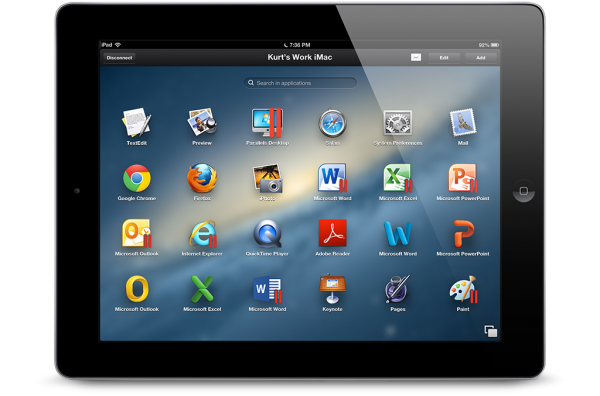
When everything is on the cloud and accessible from a Web browser or a tablet app, is there a need for virtualisation on mobile devices?
That’s the question that virtualisation vendor Parallels has tried to answer in its Access software. Launched earlier this year, Access promises mobile users a touch-friendly interface along with the full richness of the experience on a PC.
It’s a bridge between a straightforward remote access app, such as Citrix, and a full-fledged version of the software for low-power tablets, said Parallels’ vice president of desktop virtualisation, Nick Dobrovolskiy.
Access works by running on a Mac or Windows PC and allowing a user to remotely access apps on it through a tablet. Software such as Microsoft Office, for example, are run like they are on the computer, except that users get touch-friendly features such as magnification and easy pinch-and-zoom on their mobile devices.
The key is providing the same powerful features while keeping it touch-friendly, said Dobrovolskiy at a recent interview with Techgoondu.
This, he argued, was a superior experience to simply running a remote desktop app on a tablet or trying to run, say, a stripped down version of Microsoft Office for the iPhone or iPad.
The Access app currently runs on iOS but is widely expected to be available for Android devices in the months ahead.
Before its recent foray into mobile devices with its Access software, Parallels is better known for its Desktop product that enables Mac users to run Windows programs seamlessly at the same time.
However, the man credited as a pioneer in Parallels said many in the company did not even know how to use a Mac back in 2000, when the first efforts began to make Windows programs run on Macs.
“It was a project set up to solve a problem,” he explained about the first versions of Parallels Desktop. The turning point, he said, was when Steve Jobs’ rejuvenated Apple turned to Intel CPUs for its new Macs in 2006, making a lot of people interested in running Windows on Macs.
Users wanted the best of both worlds, he noted. “We realised on a Mac, people don’t want to struggle with Windows configurations but they might still want to run Windows apps,” he added.
Now, another dilemma for users brings opportunity. People want a rich experience on their tablets while enjoying the familiar touch-friendly interface and long battery life on the go, Parallels believes.






